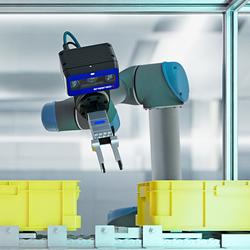Carnegie Council's Journal "Ethics & International Affairs" Explores the Ethics of Autonomous Weapon Systems (aka Killer Robots)
"Ethics & International Affairs" journal is committed to furthering the debate on Autonomous Weapon Systems, and presents a collection of recent work on the topic.
"Ethics & International Affairs," the journal of Carnegie Council, is pleased to present a collection of recent work on the ethics of autonomous weapon systems (AWS).
To access all these resources, go to http://www.carnegiecouncil.org/news/announcements/423
Autonomous Weapon Diplomacy: The Geneva Debates:
In this EIA Online Exclusive, Jean-Baptiste Jeangène Vilmer reports on the negotiations and major issues at the most recent informal experts' meeting on lethal autonomous weapons systems, which took place in April 2016 at the UN Convention on Certain Conventional Weapons (CCW) in Geneva.
Robots and Respect: Assessing the Case Against Autonomous Weapon Systems:
In this feature article, Robert Sparrow argues that the ethical case for allowing autonomous targeting, at least in specific restricted domains, is stronger than critics have typically acknowledged, but that such targeting still remains ethically problematic. (EIA 30.1)
EIA Interview with Robert Sparrow on Autonomous Weapon Systems and Respect in Warfare:
In this interview podcast (with transcript), Sparrow elucidates his reasoning for classifying autonomous weapon systems as mala in se and how means of warfare become normalized.
Robots and Respect: A Response to Robert Sparrow:
Ryan Jenkins and Duncan Purves respond to Sparrow's article in EIA 30.1, arguing that the distinction between autonomous weapon systems and widely accepted weapons is illusory, and therefore cannot ground a moral difference between AWS and existing methods of waging war. (EIA 30.3)
Robots as "Evil Means"? A Rejoinder to Jenkins and Purves:
In this rejoinder, Sparrow responds to his critics, arguing that many of the objections they make to his article ultimately stem from a deeper disagreement about the usefulness of the concept of "mala in se" with regard to weapons of war. (EIA 30.3)
ABOUT "ETHICS & INTERNATIONAL AFFAIRS"
Published by Cambridge University Press, Carnegie Council's quarterly academic journal, "Ethics & International Affairs," aims to help close the gap between theory and practice by publishing original essays that integrate rigorous thinking about principles of justice and morality into discussions of practical dilemmas related to current policy developments, global institutional arrangements, and the conduct of important international actors.
ABOUT CARNEGIE COUNCIL
Founded by Andrew Carnegie in 1914, Carnegie Council for Ethics in International Affairs is an educational, nonprofit, nonpartisan organization that produces lectures, publications, and multimedia materials on the ethical challenges of living in a globalized world. For more information, go to http://www.carnegiecouncil.org.
Featured Product

3D Vision: Ensenso B now also available as a mono version!
This compact 3D camera series combines a very short working distance, a large field of view and a high depth of field - perfect for bin picking applications. With its ability to capture multiple objects over a large area, it can help robots empty containers more efficiently. Now available from IDS Imaging Development Systems. In the color version of the Ensenso B, the stereo system is equipped with two RGB image sensors. This saves additional sensors and reduces installation space and hardware costs. Now, you can also choose your model to be equipped with two 5 MP mono sensors, achieving impressively high spatial precision. With enhanced sharpness and accuracy, you can tackle applications where absolute precision is essential. The great strength of the Ensenso B lies in the very precise detection of objects at close range. It offers a wide field of view and an impressively high depth of field. This means that the area in which an object is in focus is unusually large. At a distance of 30 centimetres between the camera and the object, the Z-accuracy is approx. 0.1 millimetres. The maximum working distance is 2 meters. This 3D camera series complies with protection class IP65/67 and is ideal for use in industrial environments.
